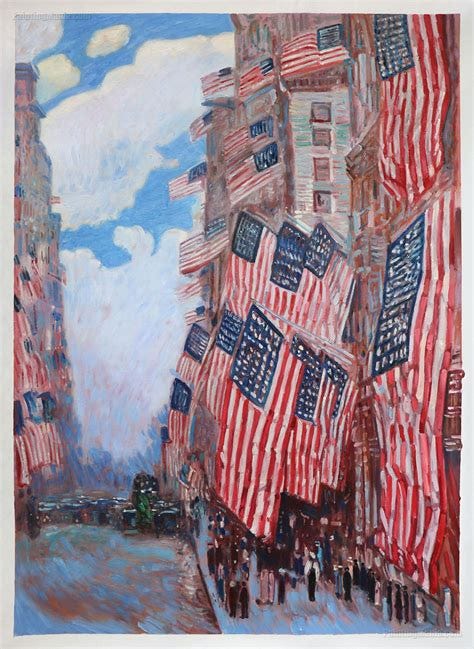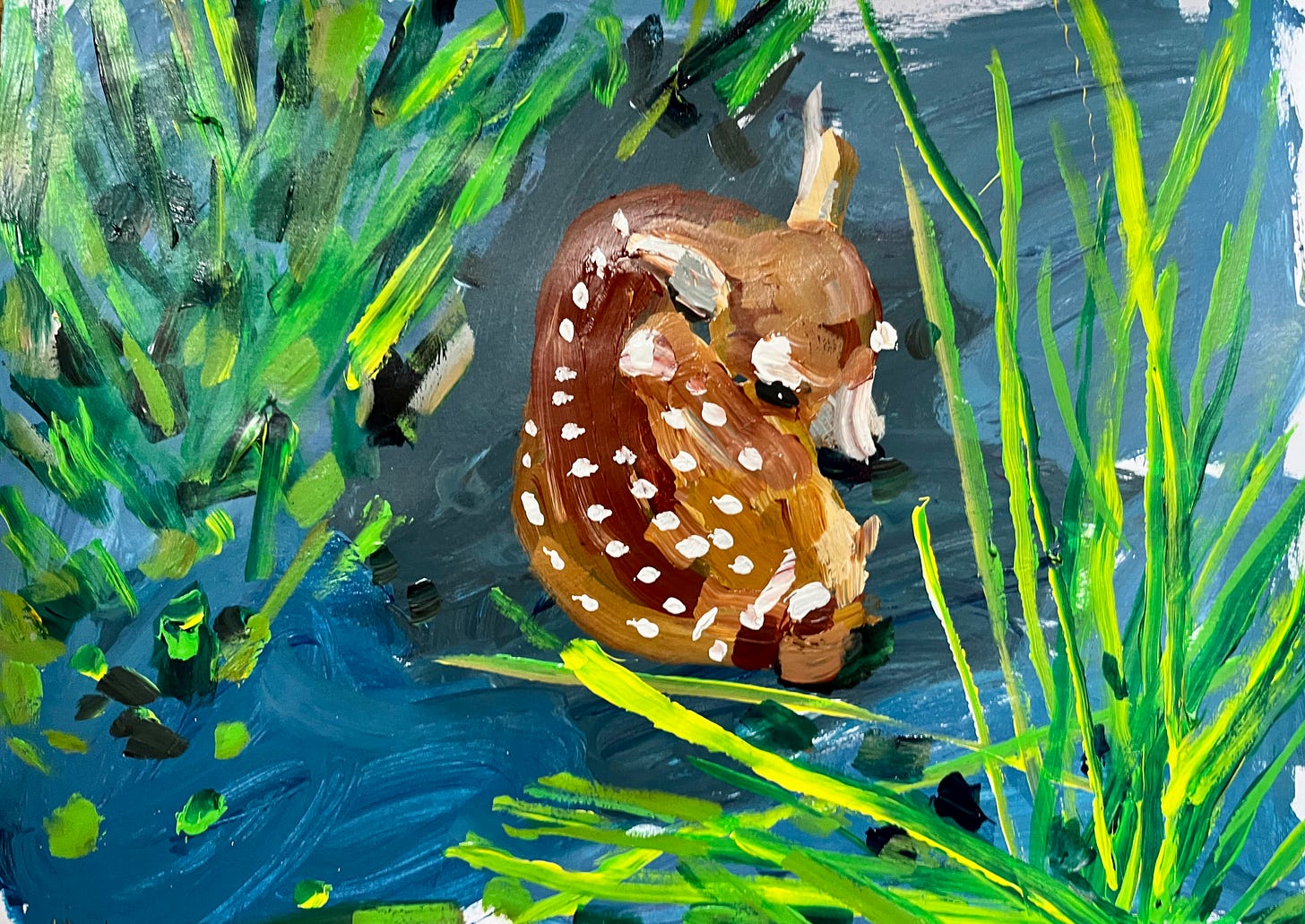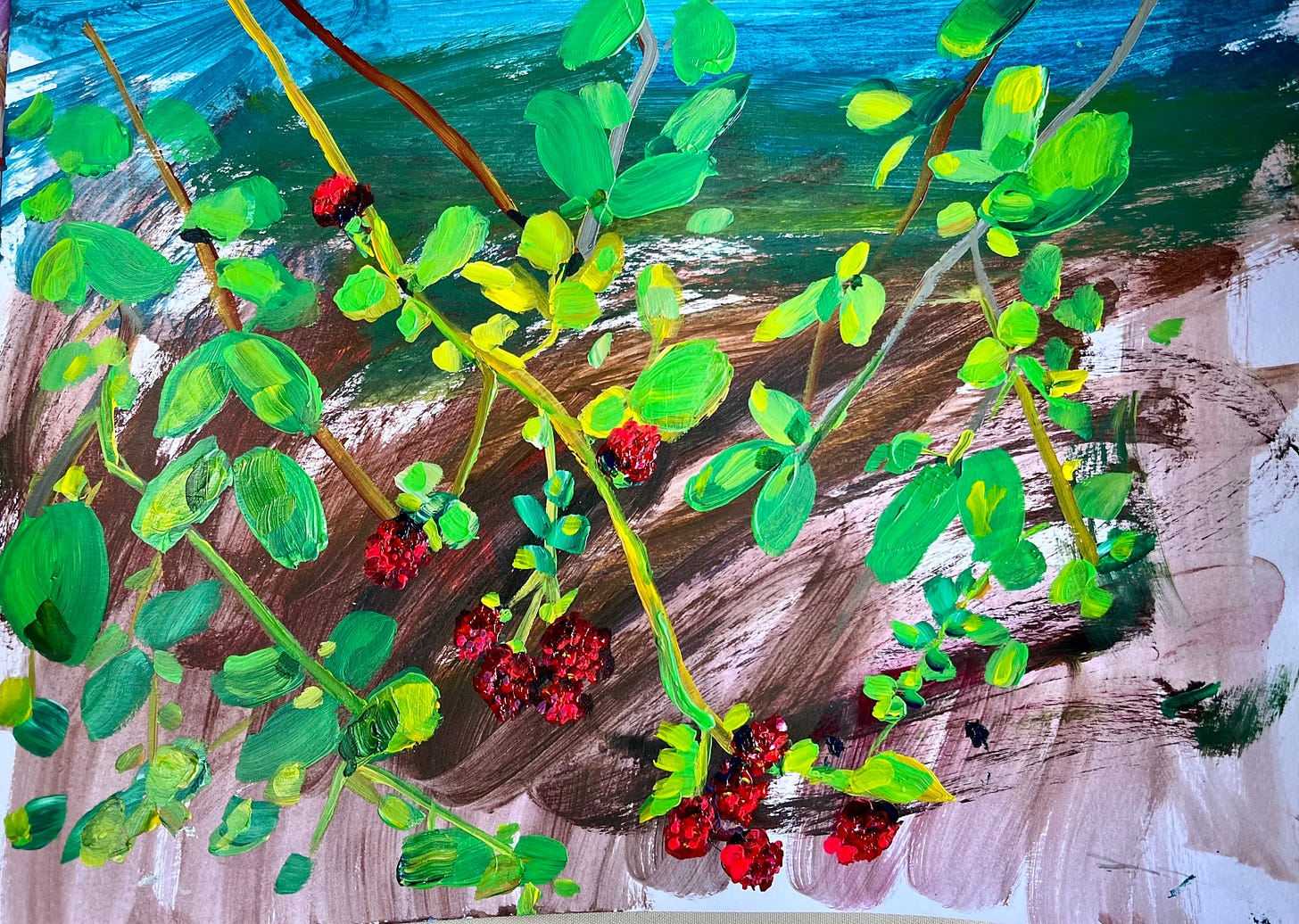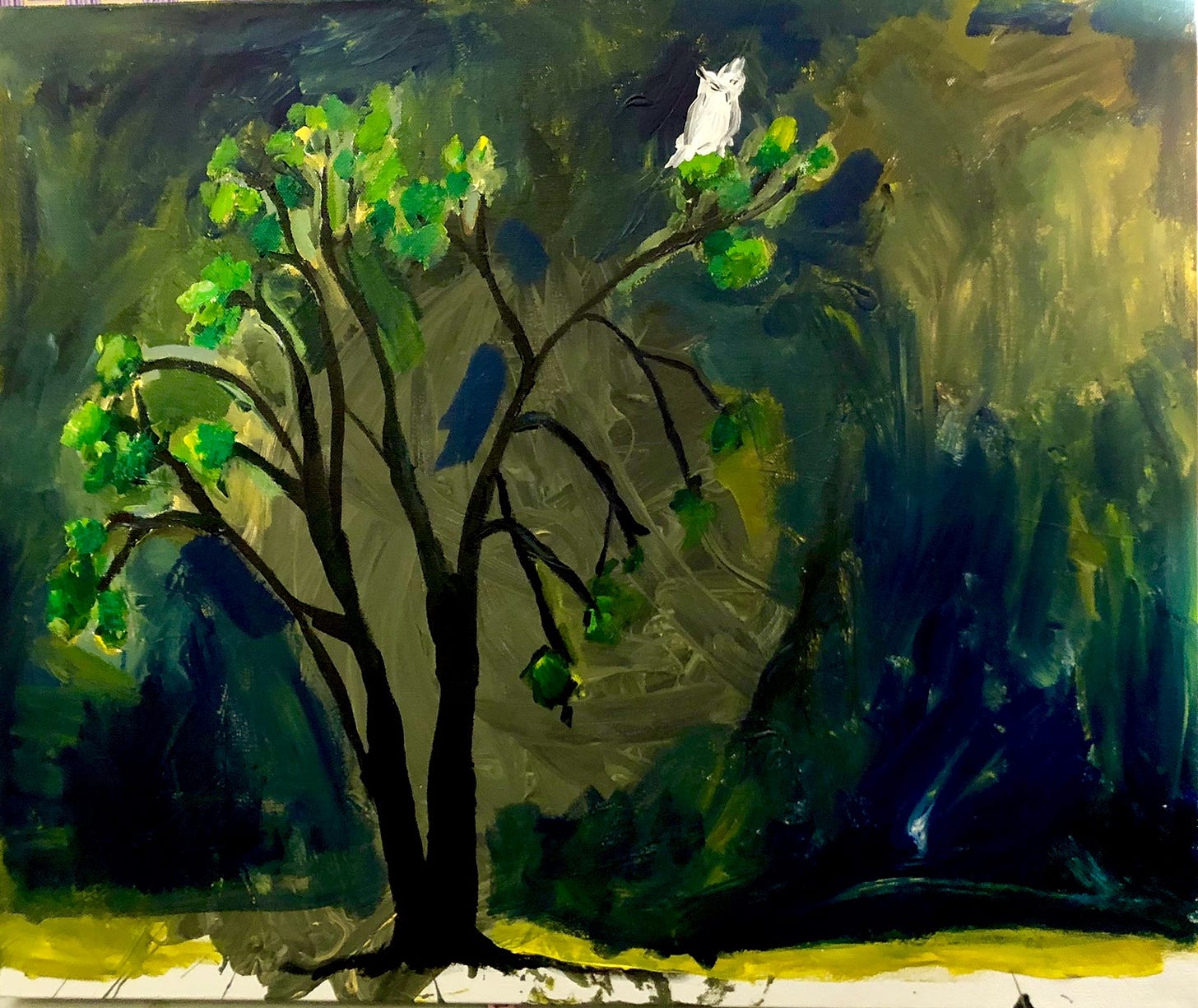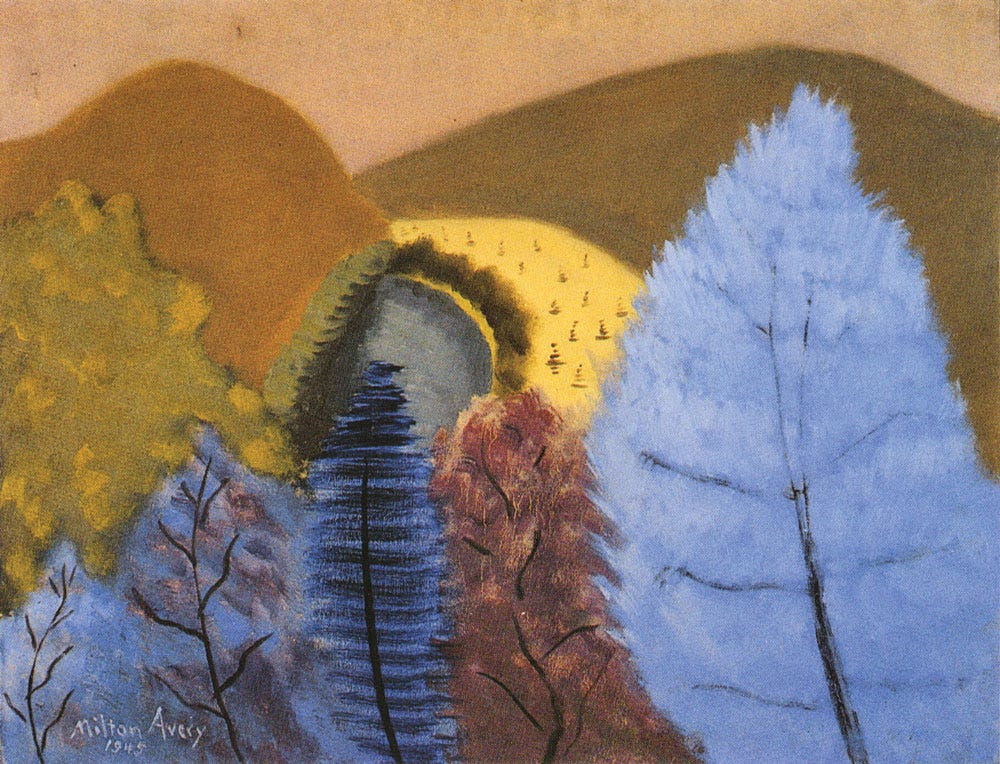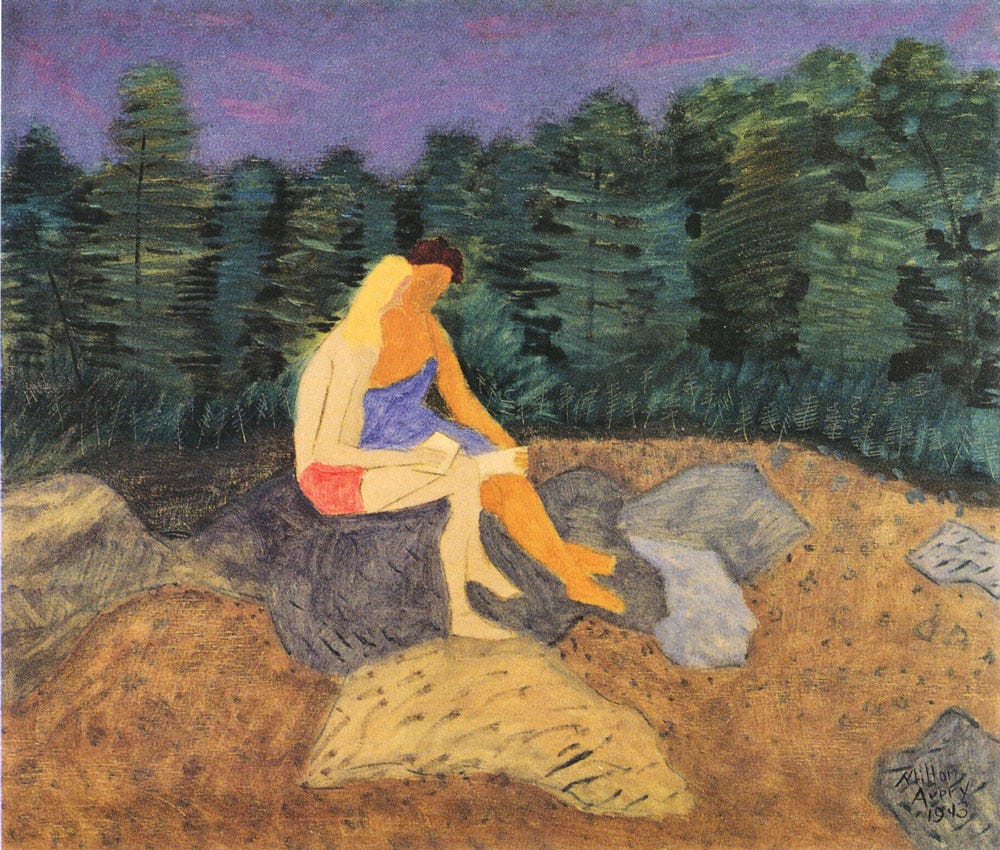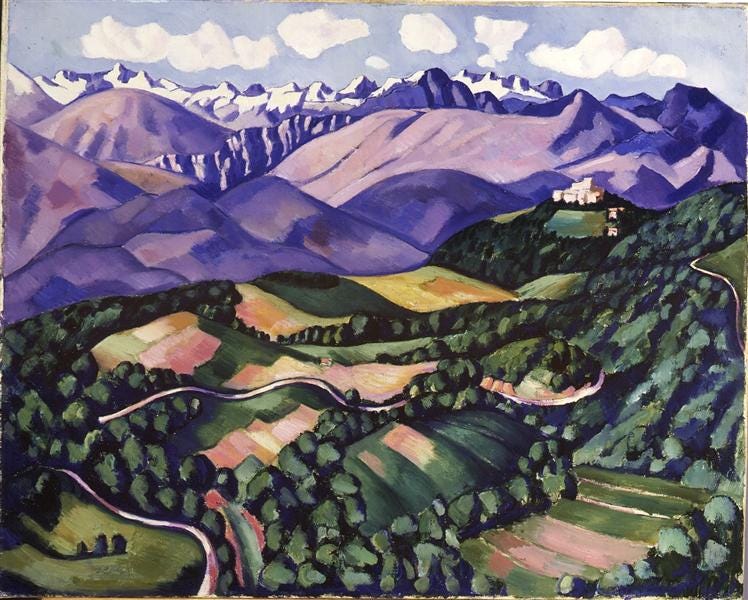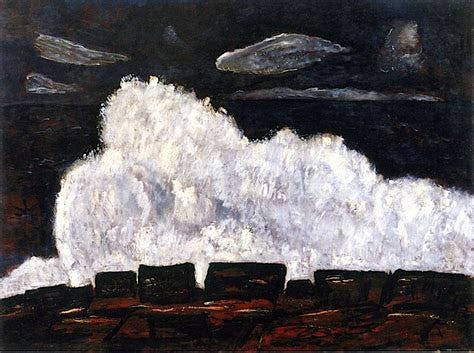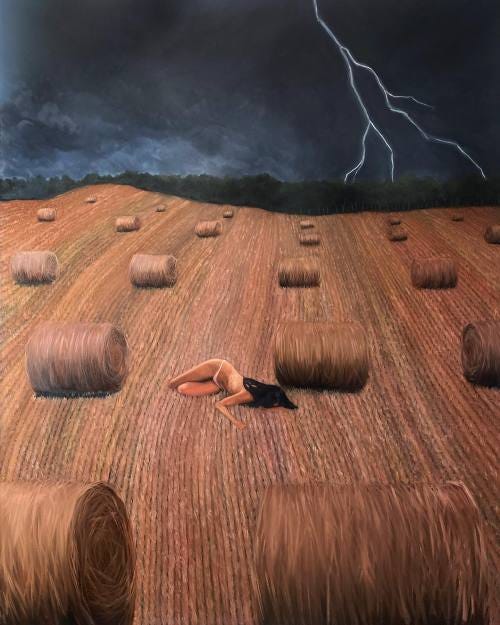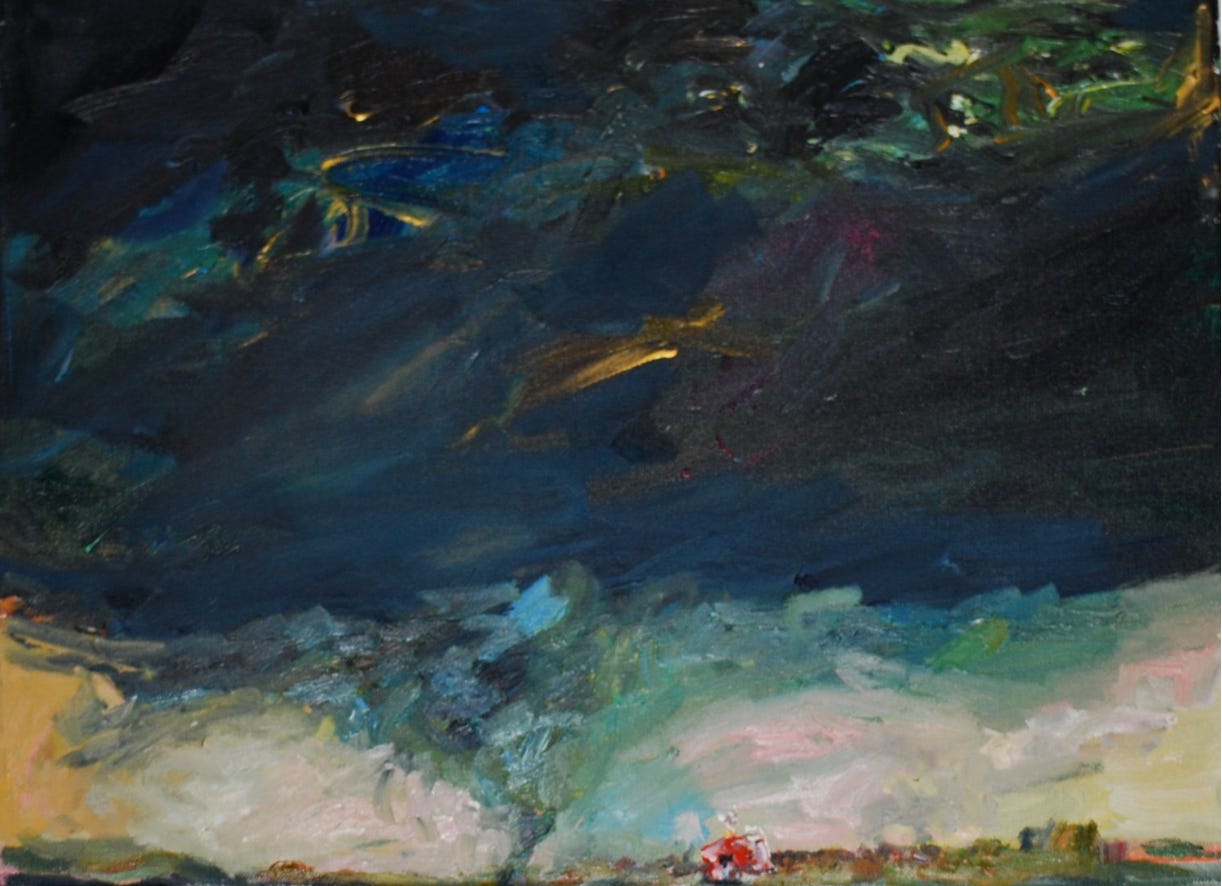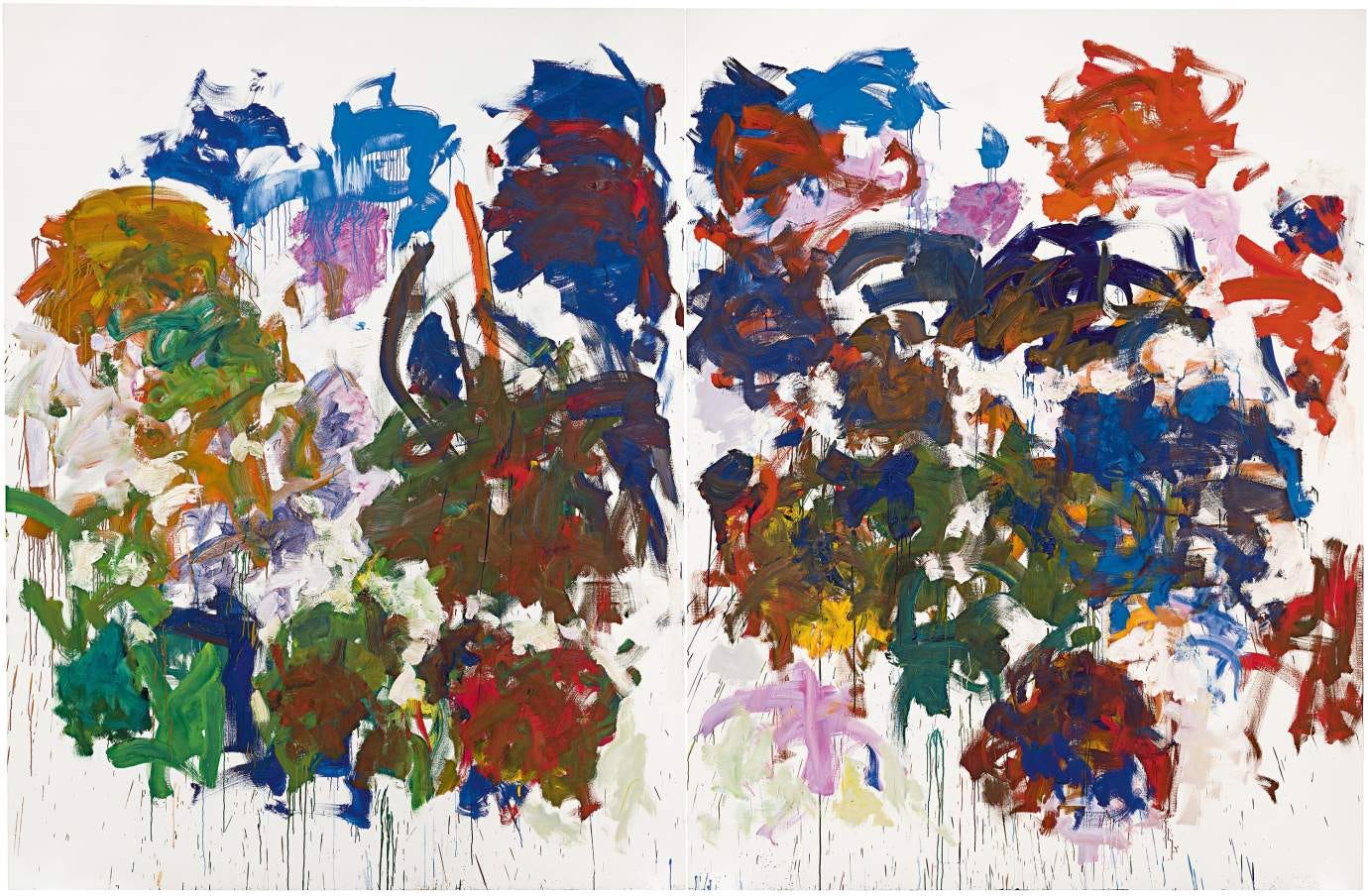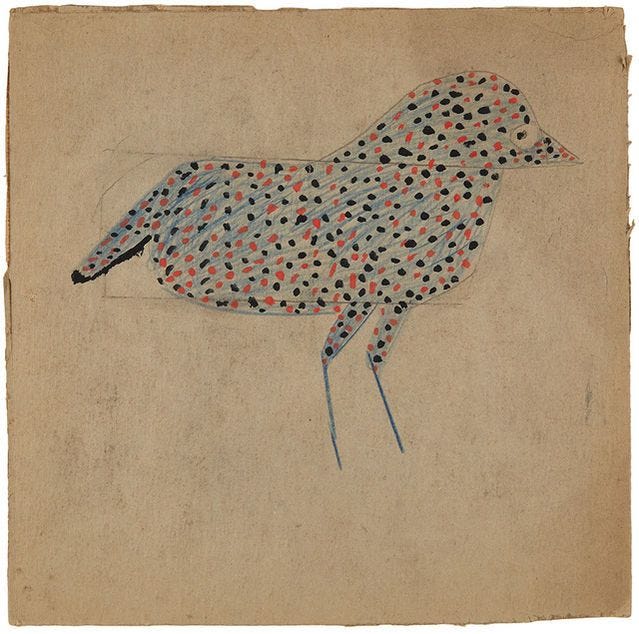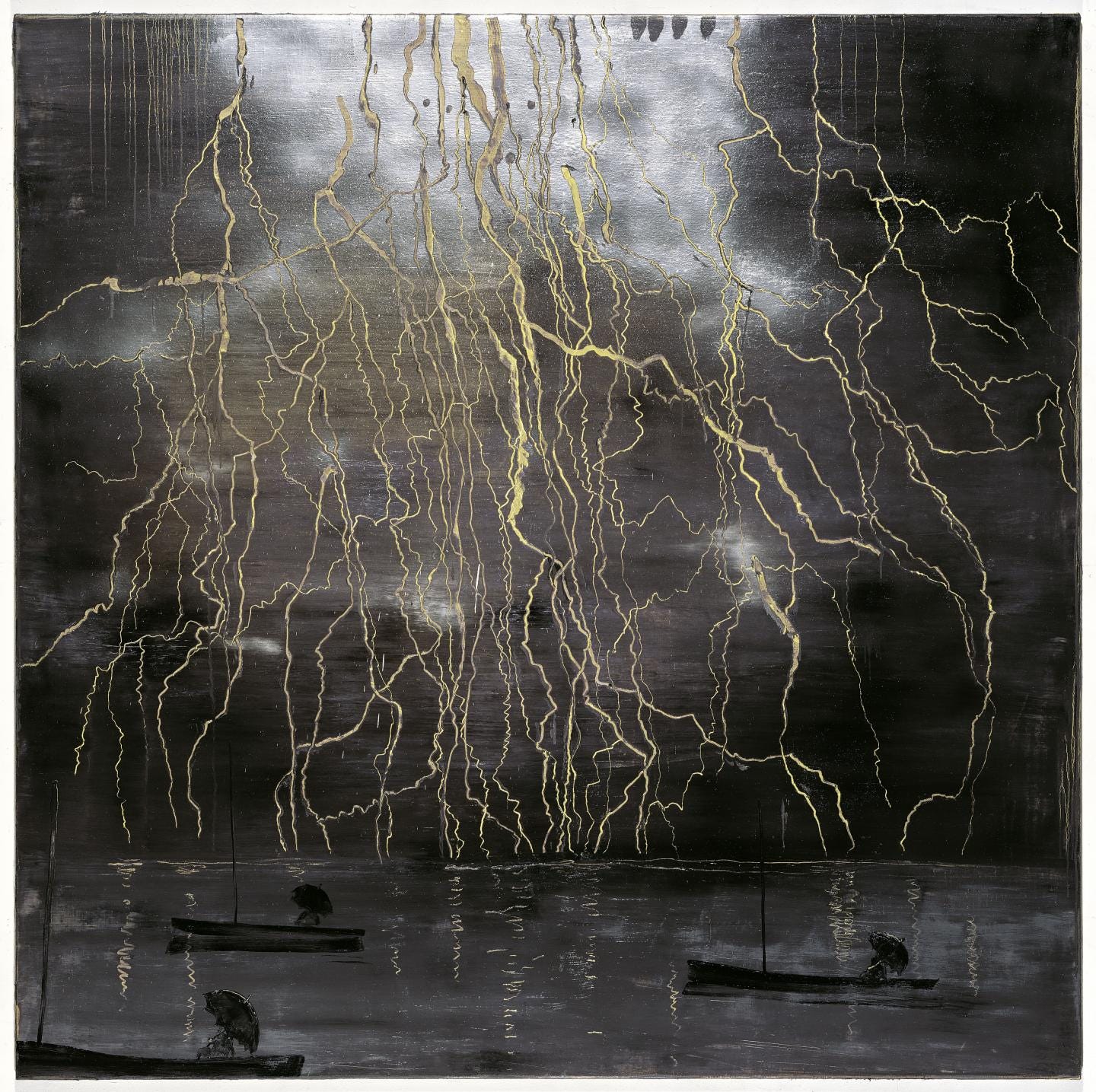Let's make this summer the summer of painting outside.
You don't have to be John Candy to love the Great Outdoors
My kids attend New York City public schools, which can only mean one thing: as I write this on June 11th, they still have several weeks of school remaining. The NYC DOE keeps the kids hostage through most of June, spitting them out just in time to attend a 4th of July parade and eat some crepes on Bastille Day.
Childe Hassam, The Fourth of July, 1916
But once our summer officially starts, some of my summer days will be spent in upstate New York being forced by my husband to go on hikes that wrap up a good two hours after I wish they would end. Those hikes are followed by tick checks and, hopefully, ice cream and beer. But walking through nature always proves to be a godsend to me as an artist: I inevitably end up doing a few nature-inspired paintings like these:
There is a long history of artists painting what they see in outside, whether they are standing in a marsh with an easel, or painting from memory when they get back indoors. Here are some “Who Needs a Muse?” painting prompts to inspire you to get outside while you can with your paints.
I’m reading an amazing book on Milton Avery right now and you could do a lot worse than to look at Avery for nature inspiration. He was a modernist and a fauvist who loved to capture an immediate moment and experiment with arbitrary colors, exaggerated cools, bold warms, and play them against muted earth tones.
Milton Avery, Blue Trees 1945
Or you could do an Avery with simplistic human figure in there like this Avery (who, in this very meta instance, appear to be sketching the great outdoors).
Milton Avery, Sketchers on the Rock, 1943
Say that you are also occasionally forced into a hike by a loved one (sic) and you reach that mountain top. Either bring a little watercolor set with you or take some photos on your phone that are not a proud selfie. (Although if your paintings are done in real time, in fresh air, they are almost guaranteed to have more immediacy and spirit.)
Marsden Hartley, Purple Mountains, 1926
Marsden Hartley, Evening Storm, Maine, No. 2,
Or, pull a Hartley and go out into the storm to paint those crashing waves.
Rebekkah Rubalcava, Never the same, 2023
Speaking of storms, consider painting that summer storm you witnessed or hid out from in your basement like Rebekkah Rubalcava does in her surrealist images of tornadoes and the vulnerable people caught up in them. I am currently obsessed with these paintings and a childhood growing up in tornado alley in South Dakota resulted in me painting some tornado paintings myself like this one:
In the world of abstract expressionism, where a lot of people were avoiding references to anything concrete or recognizable, Joan Mitchell was inspired by sunflowers and trees and other objects that might have been unbearably quaint and adorable in less forceful and relentless and non-sentimental hands.
Joan Mitchell, Sunflowers, 1991
That field of flowers you walk or canoe or bike past? Paint that. And consider that in this painting of sunflowers by Mitchell, there is barely any yellow. And some how Mitchell’s layers of color avoid becoming messy clumps, instead they capture the energy of a field of things of beauty growing and dying. Like Mitchell, make your marks quickly and with a lot of physical energy moving from your shoulder, down your arm, and into your brush.
Harald Giersing, Filosofgangen, Sorø, 1916
Harald Giersing, the Danish modernist, really liked to go wild with his greens, which is also my party trick. When you are painting trees or tree canopies, anything with some density to it, mix a ton of paint on your palette, some warm greens and some cool, and that palette kind of naturally make the leaves emerge and recede, look full of shadows and light, and create the sense of a light hitting a tree.
Or bring binoculars and see if you can spot some birds and paint them one by one in the simple, perfect style of Bill Traylor.
Bill Traylor, Spotted Black and Red Bird, (1939-1942)
Norbert Schwontkowski, Strom (River), 2007
If you were Nobert Schwontokowski what would your walk through nature bring forth? Spooky swamps and dangerous skies, moody, nocturne palettes and the potential for something life altering - whether that is getting chased by a swamp creature or getting trapped in a lightening field. Mature is a scary but humorous place for the German painter. And if you were Schwontkowski you would probably bring a little black notebook with you (his estate includes more than 500 notebooks that he filled) into the wild with you and return with it full of inspired sketches.
So in the summer of 2023 - let’s take it outside! (Just remember to check for ticks when you come back in…)
Thank you for reading! If you like this newsletter please check out my book for more of the same… “Painting Can Save Your Life: How and Why We Paint”.
Happy Painting!
Sara




